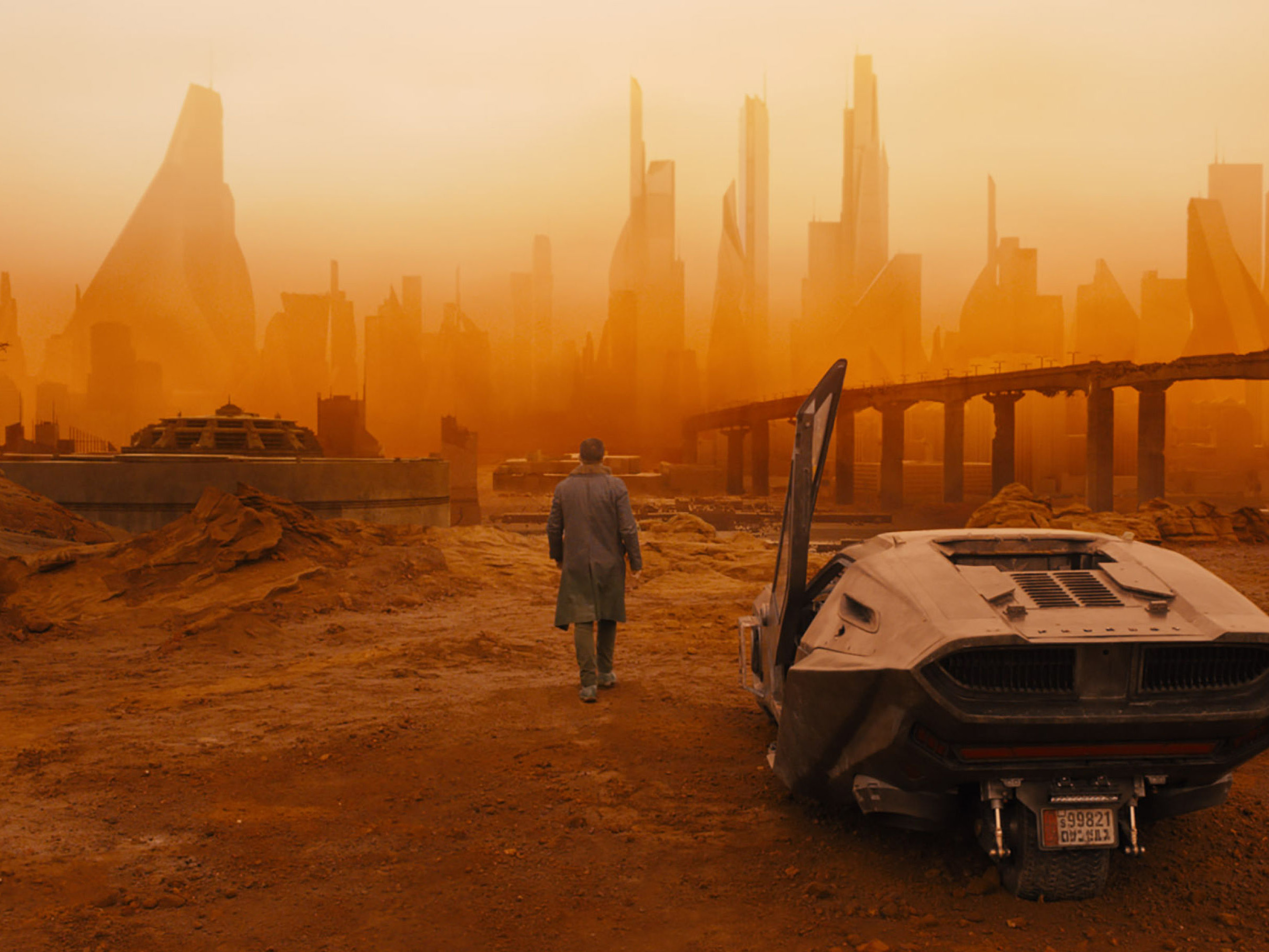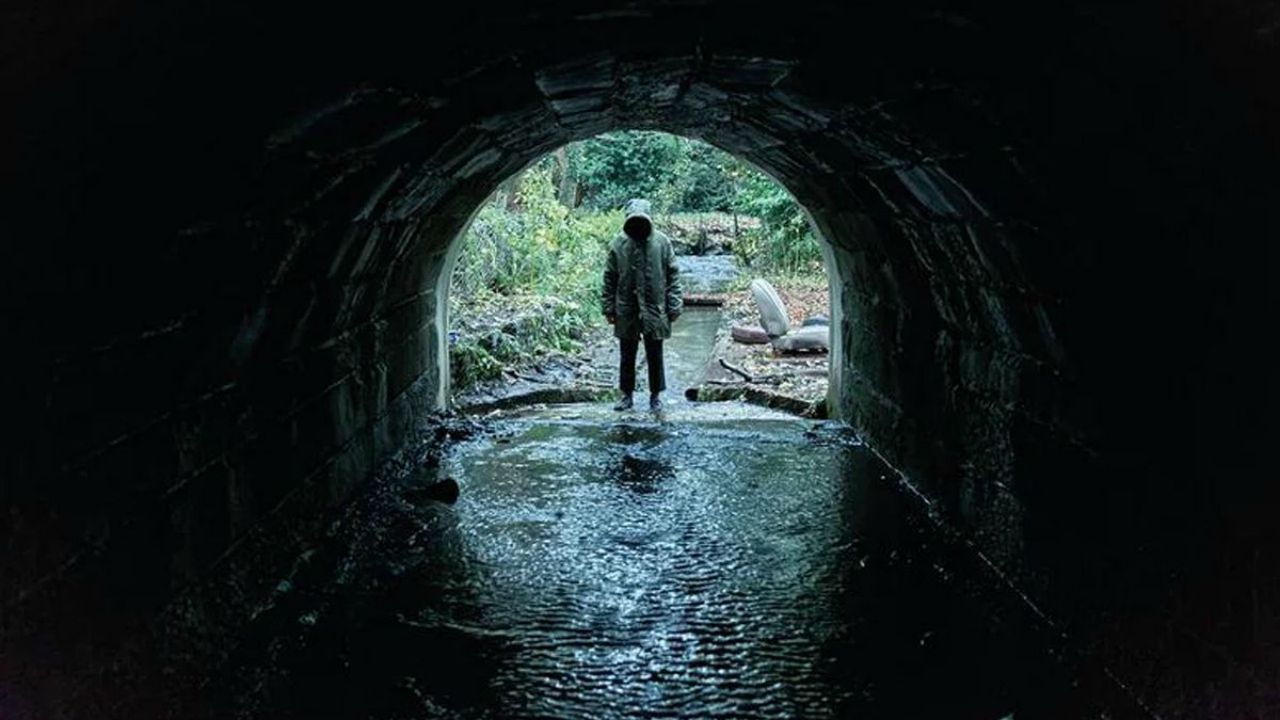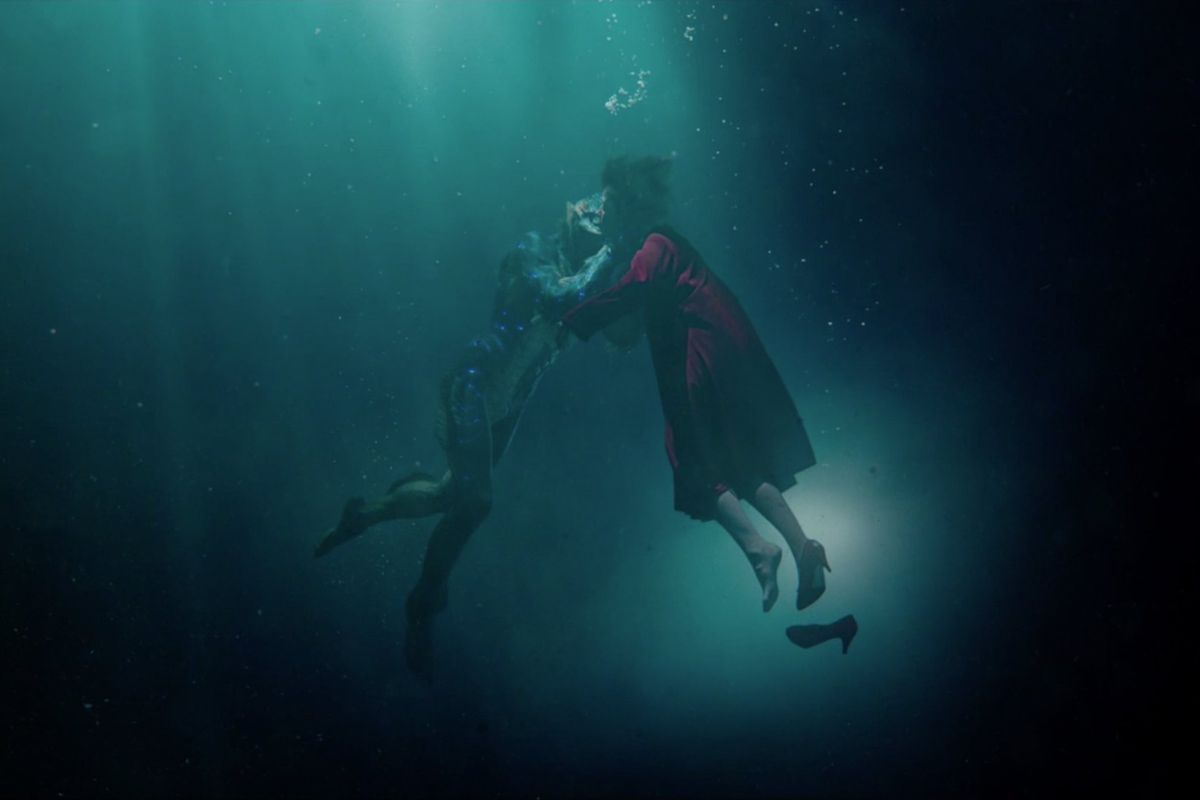As ever with these kinds of lists, they’re not only highly subjective but also limited to the films that you’ve managed to see in the preceding 365 days. There were nearly 3,000 feature films released in 2017 that had elements of fantasy, horror or science fiction and try as I might, there was simply no way to see all of them. So this list is the ten that I enjoyed of those that I saw – which, as it turns out, wasn’t that many anyway! But for what it’s worth, here they are – the ten fantasy, horror and science fiction films released in 2017 that had the most impact on me in the past year (listed in alphabetical order).
Blade Runner 2049

When it was first announced that, thirty five years after the fact, there was going to be a sequel to Ridley Scott’s Blade Runner (1982), my initial reaction was scepticism. The original had been a self-contained masterpiece that left just enough threads dangling (was Deckard a replicant?) to ease its passage from box office disaster to cult favourite. I’d blown hot and cold over director Denis Villeneuve’s previous genre film, Arrival (2016), which was visually stunning but let down by a script that couldn’t allow its female lead just to be a smart scientist but had to shoehorn in some heartstring-tugging nonsense about a dead child. That Blade Runner 2049 turned out to be so spectacular came as a massive relief. It isn’t perfect – it’s too long for a start – but it earns points for subverting that most pernicious of mainstream Hollywood cinema tropes, the missing father/father figure (it looks like it’s going down that route but pulls the rug just when you’ve become resigned to it being the same old same old). The original is still the masterpiece but 2049 is a more than creditable follow-up which, like its predecessor, deserved a lot better box office than it got. Time will tell if history will repeat itself. Maybe if we’re still here we’ll be back for part three in another 35 years time…
Borley Rectory: The Most Haunted House in England

I’ve already written at length about this little gem here but suffice to say that it’s proved to be one of the more pleasant surprises of the film year. Beautifully directed by Ashley Thorpe and photographed in a style that recalls the cinema of the late 20s and 30s it’s an intriguing blend of documentary and old-school horror, complete with spooks séances, clutching hands and unexpected faces at the window. It’s been doing the festival circuit through 2017 and one can only hope that it gets a blu-ray or streaming release some time in 208 so that it finds the wider audience it deserves. Read more about Borley Rectory: The Most Haunted House in England here.
The Cured

The annual London Film Festival threw up a number of impressive genre offerings, including the first UK screening of one of the two 4K restorations of Dario Argento’s Suspiria (1977), a couple of documentaries (Filmworker, about former actor Leon Vitali who gave it all up to become Stanley Kubrick‘s right hand man and 78/52, the almost obsessive deconstruction of Psycho‘s shower scene) and a handful of offbeat horror and science fiction films. One of the best was David Fretne’s The Cured which, at first glance, looked like a 28 Days Later… knock-off but proved to be something far more nuanced and interesting. Giving new twists to the well-worn zombie apocalypse genre (75% of the infected are cured but remember all the terrible things they did while under the influence of the virus) and stirring in references to Ireland’s troubled history, it turned out to be the most political zombie film since Romero lost his edge. Again it deserved a wider audience and one can only hope that 2018 will bring it the recognition it’s due.
Gerald’s Game

2017 was the year that film-makers fell back in love with Stephen King and we got not one but three outstanding adaptations of his work. Zak Hilditch’s Netflix exclusive 1922 narrowly misses a place on the top 10 but only because it’s up against very stiff competition. Gerald’s Game, also a Netflix exclusive, directed by the most interesting of modern American horror directors Mike Flanagan, is a characteristically slow-burning affair with a sterling performance from Carla Gugino at its heart. She plays an abused wife tied to a bed in a remote holiday home by her husband in an effort to spice up their sex life and get their relationship back to something remotely like normal. But no sooner are the handcuffs locked than Gerald keels over of a heart attack leaving her alone with a starving dog that has wandered into the house and her own creeping madness. The novel seemed unfilmable but Flanagan does a fine job, but the film is Gugino’s – on screen virtually the whole time, often alone or accompanied only by what is either Gerald’s ghost or a figment of her fevered imagination, it’s one of the most compelling performances you’ll find in a film of any genre from 2017.
Get Out

At the beginning of 2017 Jordan Peele was best known as a comedian, partner of Keegan-Michael Key. By the time it was over he was still reeling from a year in which he was being feted from all corners for one of the best horror films in a long time. It topped “film of the year” lists from the likes of the BFI’s Sight & Sound and was placed in the top ten in many others. And justifiably so. It may unravel slightly when it’s revealed to be a variation on The Stepford Wives but it’s a minor stumble that it recovers from quickly. The most overtly political film of the year, it exposes the racism in white liberal America while never losing sight of the fact that it needs to terrify its audience in more traditional ways too. Daniel Kaluuya is excellent as the young black man who falls foul of an Obama-loving middle-class white family whose outward liberalism masks a rancid bigotry amid people who on the surface really should know better. It’s also, as one might expect, frequently very funny which just makes the horrors all the more effective.
Ghost Stories

In February 2010, actor and illusionist Andy Nyman and League of Gentlemen writer Jeremy Dyson debuted their stage play Ghost Stories at the Liverpool Playhouse and before the year was out it was in London’s West End starting a highly lucrative year-long run (it was subsequently revived in 2014 before being taken to Australia the following year). The film version turned up at the London Film Festival and was an effectively creepy return to the much-loved anthology horror format. The stage play – which I never saw – had a reputation for being terrifying and the film is certainly eerie in places though never quite as frightening as the play’s reputation would have us believe. Directors Nyman and Dyson relies a little too much on loud noises and things popping up close to the camera but nevertheless a clever third-act twist and some very effective quieter moments make it a very welcome return to an older-fashioned form of film-making.
It

The 1990 mini-series adaptation of Stephen King’s novel about a supernatural child-murdering clown, It, was a cultural touchstone for the generation who were growing up in the 90s and any big screen adaptation had its work cut out for it winning over those now grown up viewers. Andy Muschietti’s film – later subtitled Part 1: The Loser’s Club, the second installment, Chapter Two, due in 2019 – may leave the story half told – it ends with the protagonists still children, vowing to return to their haunted hometown of Derry in Maine as adults – but in every other respect is a triumph. Bill Skarsgård had big boots to fill replacing Tim Curry as the murderous Pennywise but if anything he’s an even more terrifying phantom, supported by a gang of very capable child actors as the self-styled Losers Club. It was a huge success both at the box office and with the critics, its enormous box office take helping to make 2017 the most financial rewarding in horror history. If box office takings are repeated when the second part is released, 2019 may well be giving it a run for its money.
Okja

Netflix continued to flex its muscles, showing it was more than willing to go out on a limb when necessary by funding this oddity, the latest from Korean director Bong Joon-ho (Memories of Murder (2003), Antarctic Journal (2005), The Host (2006), Snowpiercer (2013)). Netflix were rightly proud of this odd fantasy, entering it for the prestigious Palme d’Or at the 2017 Cannes Film Festival but found their logo being booed by a hostile cinephile audience who were then on their feet for a four-minute standing ovation at the end. And quite rightly so. It’s as unexpected as all of Bong’s work, eccentric even, spinning the unlikely tale of a young Korean girl, Mija (Seo-hyun Ahn) who runs away with her pet super-pig Okja and becomes embroiled in the machinations of both big business and animal liberationists. Bong and his co-writer Jon Ronson are a touch heavy-handed at times but their hearts are clearly in the right place and Bong frequently channels the work of animation maestro Hayao Miyazaki which is never a bad think (look for the very blatant tip of the hat to My Neighbour Totoro in particular). If all this makes Okja sound a children’s film, you can cast that from your mind straight away – this is a fable for grown ups, with plentiful violence, a degree of philosophising and some rather distressing scenes involving attempts to get Okja to mate. If nothing else the film shows just how far Netflix had come in 2017, from upstart streaming service to serious player in world cinema.
Paddington 2

In a world seemingly gone completely insane – politically, socially, culturally – there’s something rather lovely about one of the finest films of the year being a simple tale of the power of being nice to each other. This sequel to the 2014 film would have resonated particularly strongly in the madness of post-Brexit Britain. While people on either side of the increasingly bitter divide abandoned their sense and simply resorted to hurling abuse at each other, along came Paddington, a young immigrant bear, to show us that although it might get you into scrapes along the way (he ends up in prison for most of the sequel), being decent, understanding and accepting will inevitably be its own reward. Add to that much-needed reminder of how we should be behaving we have some very funny jokes that often take the whole film to pay off, a wonderful returning ensemble cast and a quite brilliant turn by Hugh Grant as the film’s villain, a self-centered actor whose greed lands poor Paddington in all sorts of trouble. Make sure you stay for the end credits for the scene that one suspects Grant has waited his entire career to play…
The Shape of Water

Guillermo Del Toro has always been at his best when he tackled his smaller, more personal projects. The disappointment of the brain-dead Pacific Rim (2013) had been at least partly dissipated by the impressive Gothic Crimson Peak (2015) but it was another London Film Festival offering, The Shape of Water that fully restored Del Toro to his rightful place as one of modern fantasy cinema’s most outstanding directors. The year’s most offbeat love story it features another fantastic central performance, this time from Sally Hawkins as the mute janitor at a research facility in the 1960s who befriends and eventually falls in love with a mysterious amphibious creature being held captive there. Hawkins is wonderful as the compassionate Elisa while Del Toro regular Doug Jones brings the never-explained creature to highly-believable life. Del Toro hailed it as his “grown up” film in an interview with Indiewire: “For nine movies I rephrased the fears of my childhood, the dreams of my childhood, and this is the first time I speak as an adult, about something that worries me as an adult. I speak about trust, otherness, sex, love, where we’re going. These are not concerns that I had when I was nine or seven.” As such it’s to be hoped that it marks a whole new and productive chapter for Del Toro.
Great list – sadly only seen three of them (GET OUT, PADDINGTON 2 of course and BLADE RUNNER 2049 – but will make an effort to catch up with the others at least before 2018 is out … Have a great new year chum.
LikeLike
Judging by other people’s lists there are dozens of good films from this year still waiting to be explored. But these will do for now I think! Next year I’ll try a bit harder to be a bit more up-to-date… Happy new year to you too!
LikeLiked by 1 person
It’s the same with top album lists, an often bewildering divergency of tastes and genres, but this is an interesting sample of what was on offer in 2017, and few here I hadn’t been aware of, so cheers, ta very much 🙂
LikeLiked by 1 person
I think it might be interesting actually to come back to the best of 2017 list at the end of 2018, after I’ve seen a few more of the films released last year. I wonder how different the list list may look then!
LikeLiked by 1 person
Hmmm. Lots of things on here I really want to see. Good list Kev!
LikeLike
Thanks David!
LikeLike